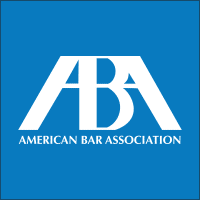
The Occupational Safety and Health Administration (OSHA) aims to ensure employee safety and health in the United States by working with employers and employees to create better working environments. If you are an employer covered by the OSH Act, you must provide your employees with jobs and a place of employment free from recognized hazards that are causing, or are likely to cause, death, or serious physical harm.
Among other actions, you must also comply with the OSHA statutory requirements, standards, and regulations that, in part, require you to do the following: (1) Provide well-maintained tools, equipment and protective equipment, (2) Provide medical examination, (3) Provide training required by OSHA standards, (4) All employers are required to notify OSHA when an employee is killed on the job or suffers a work-related hospitalization, amputation, or loss of an eye. A fatality must be reported within 8 hours. An in-patient hospitalization, amputation, or eye loss must be reported within 24 hours, (5) Keep records of work-related accidents injuries, illness- and their causes- and post annual summaries for the required period of time, (6) Post prominently the OSHA poster informing employees of their rights and responsibilities, (7) Provide employees access to their medical and exposure records, (8) Do not discriminate against employees who exercise their rights under the OSH Act.
In the healthcare field, maintaining compliance with the rules and regulations that apply to medical practices can be difficult, especially for small practices with limited resources. One way to meet this challenge is to be organized and have a plan when dealing with OSHA compliance. OSHA rules apply to every aspect of the healthcare workplace and cover issues such as preventing blood-borne pathogens exposure. Written in highly technical language, it is important to seek out information from experts in the field. There are numerous resources such as attorneys that practice in providing OSHA compliance and dealing with OSHA violations, consulting firms and other programs that highlight the important requirements. Additionally, it is critical to understand that although a small medical practice may think it cannot afford these resources, but taking advantage of these resources may be the most long-term cost effective option.
To begin working towards OSHA compliance, the best practice for a medical practice is to start with a written safety and health plan. The document should describe how the organization will manage OSHA compliance, including how it will analyze the facility for deficiencies, prevention, control strategies, and necessary staff training. It is also important to include blood-borne pathogens plan, and it is important how a practice protects its workers from exposure and what the response would be if someone is exposed.
An important final note, training is a must. OSHA mandates that organizations train their staff each year on specific topics. The key to successful training is to preserve a safe, healthy environment, and to maintain current compliance.
Syeda M. Madani, Esq. is an attorney with Amal Law Group, LLC. Email her at smadani@amallaw.com or visit their website at www.amallaw.com.
DISCLAIMER: This article is written for informative and educational purposes only. This article is not legal advice and does not create an attorney-client relationship between the author and any reader.






